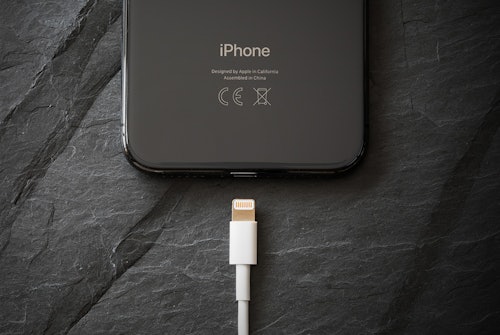- Where are Fake Louis Vuitton Belts Sold?
- Red Flags of a Fake Louis Belt: The Listing
- Red Flags of a Fake Louis Belt: The Product
- Where Can You Buy Authentic Louis Vuitton Belts?
- What to Do If You Bought a Fake Louis Belt
Louis Vuitton belts are a must-have accessory for any fashionista, so it’s no surprise that the market is flooded with scammers looking to trick consumers into purchasing fake or counterfeit products. To avoid buying a fake Louis belt, there are a number of things you can look at to verify that you are procuring an authentic one.
Where are Fake Louis Vuitton Belts Sold?
Fake Louis Vuitton belts are typically sold by private online sellers and via online marketplaces such as eBay, Amazon and Craigslist. You may also find fake Louis belts in second-hand retail stores or in other countries where counterfeit products are common.
Red Flags of a Fake Louis Belt: The Listing
Here are some easy ways to tell the authenticity of the belt within the listing itself, long before buying it or discussing it with the seller.
Poor Grammar & Spelling Errors
One of the easiest ways to tell if a listing for a Louis Vuitton belt is real or not is by reviewing the copy in the listing when buying from an online second-hand retailer, marketplace, or through a private seller.
Any post that contains more than one or two grammatical or spelling errors is usually a red flag that this may be a scam.
Be Mindful of Human Error
Keep in mind that if you’re buying the belt off of Craigslist or another marketplace, the owner of the belt may accidentally include some errors. So, this is not always a telltale sign.
Further, when there are strange sentences or incoherent phrases that may be the result of running the text through an online translator, it’s typically a good indication that the listing may be for a fake Louis belt.
It's Priced Way Below Market
New Louis Vuitton belts cost anywhere from $415 to $1,430 for belts with multi-pockets. So if the belt you’re looking at is priced way below market value, you’re likely purchasing a fake Louis belt.
Unfortunately, online marketplaces such as Facebook's are the worst offenders when it comes to selling fake luxury goods. Before snatching up a cheap Louis Vuitton belt, ask yourself why a seller would be offering it for such a low price and why they’d be willing to let it go for such a big loss.
If you ask the seller directly, their answer may even help you know whether they are trying to scam you or not.
The Seller Refuses to Show Up-Close Details
Often, with fake products, sellers will refuse to show the product up-close or even in person before you buy it. This is because they know that those with a trained eye will be able to spot the dupe.
Make sure to ask for close-up photos if none are listed online or meet the seller in a public place first to inspect the belt before any money exchanges hands.
The Seller Has Bad Ratings
It’s always a smart idea to check a seller’s online ratings and reviews. Most major online marketplaces will include a seller profile page where you can look at their overall rating and read any reviews left by buyers.
A seller with a lot of bad ratings is a good reason to not do business with them. On the other hand, a seller with overly great ratings can also be a red flag.
Since scammers can often write fake reviews, be sure to look for a lot of reviews with five-star ratings, comments posted all within the same short timeframe, or usernames that seem like they have been created by a bot.
Red Flags of a Fake Louis Belt: The Product
Here are some quick ways to determine whether your Louis Vuitton belt is authentic when you have the product in hand or close-up photos to review.
Manufacturing Country
Authentic LV belts are only manufactured in Spain. If the country listed on your belt says anything but Spain, it’s a fake. You can find the manufacturing company on the back of the belt.
This area should contain four lines of text that looks exactly like the below:
- The copyright symbol
- LOUIS VUITTON
- PARIS
- made in Spain
Any other variation, uneven spacing, or crooked lettering likely means your belt is a counterfeit.

The Material
One of the reasons Louis Vuitton has become so successful is that it doesn’t skimp on the materials for its products. The same goes for its belts. LV belts are made up of calfskin leather and Monogrammed canvas.
The material is made from 100% that is coated with a plastic canvas called polyvinyl chloride. Printed on it is the famous Louis Vuitton monogram with the dark brown and lighter colored Damier azur checkerboard print. The vertical lines in the checkerboard squares are also significantly thicker on fakes.
When feeling the belt, you’ll notice the calfskin leather has a smooth surface and is more durable than regular cowhide.
The Pattern
Authentic LV products always have an even and symmetrical Louis Vuitton pattern. In most instances, the first set of squares is not visible at all in authentic Louis belts with the Damier checkerboard print. And the second set of squares is fully opaque.
Of course, this will vary by style but most fakes often miss this detail.
The Louis Vuitton Stamp
The back of the belt includes a date code, model number, and the sizing stamped into the material. Check to make sure that the model number matches the actual model of your belt.
To do this, type “Louis Vuitton model number XXXXX” into your browser and verify that your belt looks like the item that pops up.
Next, look up the date code by typing it into your browser. The date code tells you the factory location of where it was made as well as when it was made. Though the date codes can vary, most newer belts will have two letters followed by four numbers:
- The first two letters represent the factory location
- The first and third numbers represent the week of the year
- The second and fourth numbers represent the year
So, a belt produced in the Spain on the 20th week of 2010 would have a date code of AC2100. Also, look for any misspellings or inconsistent spacing with the words. Additionally, LV’s logo uses a font that make the “O’s” appear like a perfect circle.

The Hardware & Buckle
There are four main things to observe for the buckle when deciding whether you have a fake Louis belt or not: how it feels, how it looks, where it’s located, and the color of the hardware.
Counterfeit belts often are too thin, too thick, or have inconsistencies—which should immediately alert you to a fake.
- The Feel: First, the buckle should feel sturdy and smooth regardless of a matte or glossy finish. There shouldn’t be any bumps or bubbles in the coating, and if the edges and the feet of the buckle logo are too gritty or include streaks, it’s likely not a real LV belt.
- The Look: You’ll want to notice the distance between where the “L” and the “V” overlap. Fake Louis belts may have less distance between the two characters and the left lines of the “L” and “V” should be somewhat thicker than the right side of the “V” and bottom line of the “L.”
- The Location: The location of the buckle should be closer to the end of the strap.
- The Color: While the colors may vary by style, check LV’s website to ensure that the color in question is standard for that particular model or is one that Louis Vuitton uses. Overly brassy and orange golds are usually a telltale sign of a fake along with grey or dull silver tones.

The Stitching
The stitching on fake Louis Vuitton belts is one of the easiest ways to tell it’s a replica. The stitches should be tight and close together, at a slight angle (versus straight), and should be even and properly aligned.
Also, the stitching in the corners should follow the shape of the belt so that the border outside of the stitching is the same width all the way around.

The Packaging
For the packaging, you’ll want to notice the box color, texture, and font, as well as the boldness of the letters. The packaging of real Louis Vuitton belts includes a dug bag inside of an orange box with LOUIS VUITTON centered on it in deep blue letters with spacing that is consistent with its logo.
Inside you’ll find a dust bag is made from 100% cotton flannel and feature two ropes to tighten them up. The bag will have LV’s name spelled out in the same deep blue coloring and will have consistent spacing.
Lastly, if the belt comes with an orange “authenticity card,” it’s a fake. These cards are not accompanied with real Louis Vuitton products.
Where Can You Buy Authentic Louis Vuitton Belts?
If you’re worried about purchasing a fake Louis Vuitton belt, your best bet is to buy it directly from LV’s website. This is the safest and most-secure option but you can also visit any major retail stores such as Bloomingdale’s, Nordstrom, or Saks Fifth Avenue.
Well-known consignment luxury resellers are also an option if you’re okay with buying a used belt. Some of the best places to buy designer resale luxury goods include:
- The RealReal
- Fashionpile
- Luxury Garage Sale
- Rebag
- Vestiaire Collective
- Sellier Knightsbridge
- Mon Vintage
What to Do If You Bought a Fake Louis Belt
Unfortunately, if you’ve been duped and accidentally purchased a fake Louis belt online, you may not be able to get your money back. However, if you purchased the belt on one of the websites that guarantees the authenticity of their products, they will typically have a policy to handle replicas.
Report it to the Retailer
Many major online retailers also have a reporting option for problematic listings which will alert them to either delete the post or remove the seller from using their site. While you may not get your money back, it can help others from falling for the same scam.
Contact Your Bank
Check with your bank as well if the payment hasn’t fully cleared when you realize it’s a fake. They may be able to work with you on getting your money back.
File a Police Report
Lastly, you can always file a police report which may add to evidence against a person if they are caught later on. You’ll need your proof of payment and any correspondence you may have had with the seller.











Comments